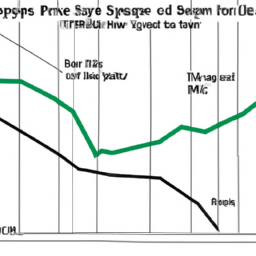When it comes to investing in the stock market, many people consider it to be a daunting task. However, with the right knowledge and strategy, investing in the stock market can be a profitable venture. One option for investors to consider is Spy Futures investing. In this article, we will explore what Spy Futures investing is, its potential benefits, and how to get started.
Spy Futures investing involves trading futures contracts on the Standard & Poor's 500 Index, also known as the S&P 500. The S&P 500 is a market-cap weighted index of 500 large-cap U.S. companies. Spy Futures allow investors to speculate on the future value of the S&P 500 index. The futures markets operate 24 hours a day, five days a week, allowing traders to buy and sell contracts at any time.
One potential benefit of Spy Futures investing is the ability to profit from both rising and falling markets. When an investor buys a futures contract, they are essentially agreeing to buy or sell the underlying asset at a predetermined price on a future date. If the investor believes the price of the asset will rise, they can buy a futures contract to lock in the price. On the other hand, if the investor believes the price will fall, they can sell a futures contract to lock in the price they will receive.
Another benefit of Spy Futures investing is the ability to leverage. Futures contracts require only a fraction of the total value of the underlying asset to be traded. This means that investors can control a large amount of the underlying asset with a relatively small investment. However, it's important to note that leverage can amplify both gains and losses.
To get started in Spy Futures investing, investors will need to open a futures trading account with a brokerage firm that offers Spy Futures trading. The account will require a minimum deposit, and investors will need to meet certain eligibility requirements, such as having a certain level of trading experience and a specific net worth.
Once the account is set up, investors can begin trading Spy Futures contracts. Investors can buy or sell contracts based on their market outlook. For example, if an investor believes the S&P 500 index will rise, they can buy a futures contract. If they believe the index will fall, they can sell a futures contract.
It's important to note that Spy Futures investing is not without risk. Futures trading involves a high degree of leverage, which can amplify both gains and losses. Additionally, futures trading requires a significant amount of capital, and investors must be prepared to lose their entire investment.
To mitigate risk, investors should have a solid trading plan in place. This plan should include entry and exit points, as well as stop-loss orders to prevent significant losses. Additionally, investors should only invest money that they can afford to lose and should not trade on emotion.
In conclusion, Spy Futures investing can be a profitable venture for investors who are willing to take on the risk involved. With the ability to profit from both rising and falling markets and the potential for leverage, Spy Futures can be an attractive option for traders. However, it's important for investors to have a solid trading plan in place and to only invest money that they can afford to lose. With the right knowledge and strategy, Spy Futures investing can be a valuable addition to an investor's portfolio.
